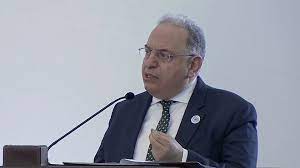Financial Recovery in Syria: Radical Reforms and Promising Investment Opportunities

Regarding monetary stability, the exchange rate of the Syrian pound improved by 35%, reducing the gap between the official price and the parallel market, and developing national payment systems in preparation for opening up to the private sector.
Avoiding external borrowing and focusing on attracting foreign direct investment and financing through development funds while maintaining monetary independence by not linking the pound to any foreign currency, reintegrating into the global financial system, reactivating the banking correspondence network after lifting sanctions, and working to reconnect the Syrian banking system to the "SWIFT" network, and strengthening anti-money laundering systems to build trust with global banks.
Addressing outstanding issues by inventorying and reviewing the frozen Syrian assets abroad and resolving legal obstacles related to development fund loans.
Despite these positive indicators, Syria faces serious challenges in the recovery process, primarily inflation risks with increased liquidity, a weak local production base, and an unstable regional political environment.
The Syrian plan appears to be moving along two parallel tracks: a radical internal reform of the financial sector and a gradual reintegration into the global economy. These reforms represent a historic opportunity for investors to enter a promising market and impact the Syrian economy to emerge from isolation, while citizens will benefit from gradual financial stability.
Success will depend on the ability to maintain the pace of reforms and ensure transparency in granting banking licenses, achieving a balance between openness and protection from risks.
Syria today is taking serious steps towards building a modern financial system, but the road remains long to fully restore the trust of the international community.